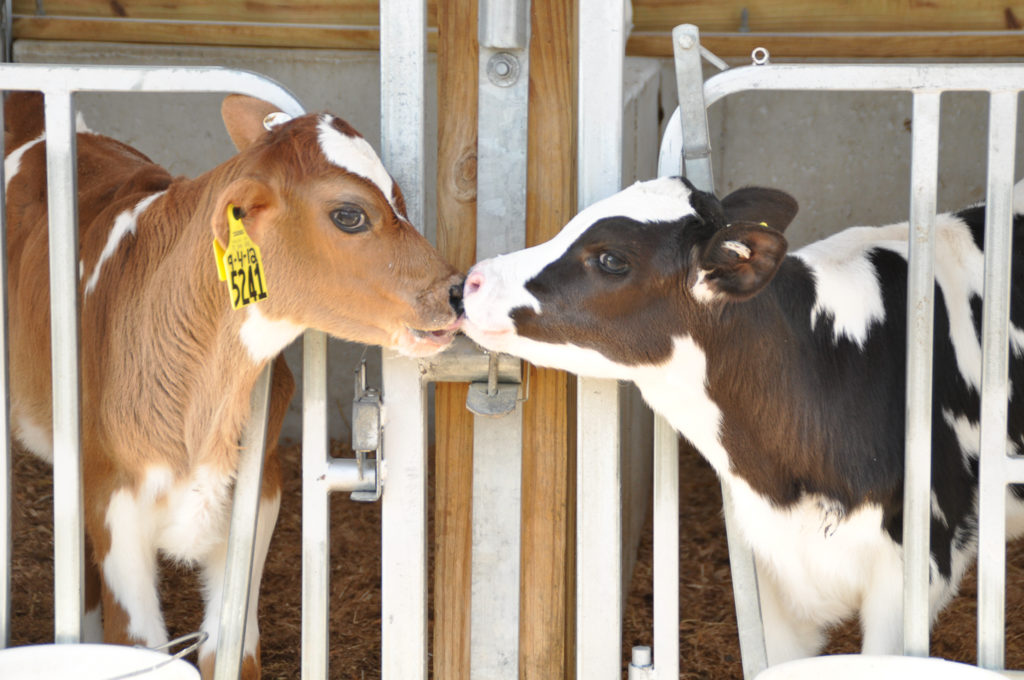February is traditionally known as a month dedicated to love and falling in love along with an array of hearts, stuffed animals and flowers. While many people often show their pets love on Valentine’s Day, imagine showering a few hundred dairy cows with affection. As we celebrate the month of love, let’s recognize how dairy farmers love their herd in February as well as all year long.
Calf Love
Starting from the day they are born, dairy farmers provide around-the-clock care to dairy cows. This care begins shortly after birth when calves each receive their very own home that protects them from the weather and gives them a clean, warm and airy place to live. The individual house, called a hutch, also protects the calf from diseases that they could contract if they were housed with other calves.
Calves are fed milk to help them grow and stay healthy. After a few weeks, they are introduced to solid food – a sweet, molasses grain. This helps them wean from milk to a grain and forage-based diet. Calves also have access to fresh water at all times. Lastly, calves receive vaccinations that help to build their immunities.
Heifer Love
Once a calf is two months old, her immune system is strong enough to join other calves in small groups. These young calves are grouped together in a “class” that they will stay with as they get older.
Typically, these young calves are housed in an open pen, with soft straw bedding and fresh food. No more milk now! They now eat a grain and forage mix to help them grow.
At about six months, the calves are now heifers, a term used for “teenage” cows – that is, cows that haven’t had a calf yet. At each stage of growth, the heifers will receive special attention from the dairy farmer, including continued vaccinations, health checks and specially formulated food and comfortable housing. The heifers will soon become the cows that provide milk, so dairy farmers spend a lot of time and effort to ensure they are healthy and comfortable.
Dairy Cow Love
Once a heifer has her first calf, she is officially a dairy cow. The dairy cow must be shown special care to ensure she is able to join the milking herd and that she stays healthy and fit. The dairy farmer and his team monitor them for several weeks for any illness, giving them a specially formulated food and often times housing them in small groups of other new mothers.
After a few weeks, the cow will join the milking herd where she’ll have access to fresh food and water, soft, individual stalls and quality healthcare. Her only job is to eat, drink, rest and produce milk. As dairy farmers walk among their dairy cow herd, they look for cows who are quiet, content and chewing their cuds. This means that the love and care they are giving to the cows is being received and reciprocated!
As we celebrate the month of love, it’s nice to remember that for dairy farmers, love and care is something they think about every day – their dairy cows depend on it!
